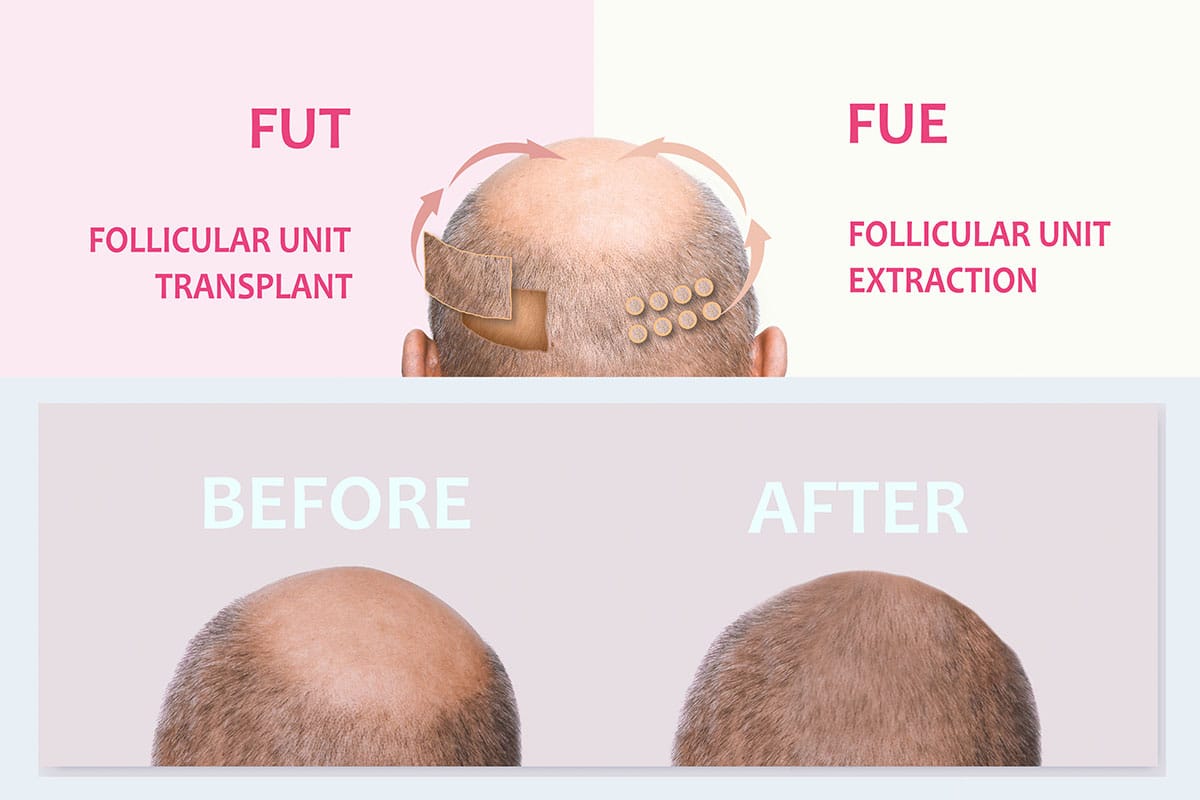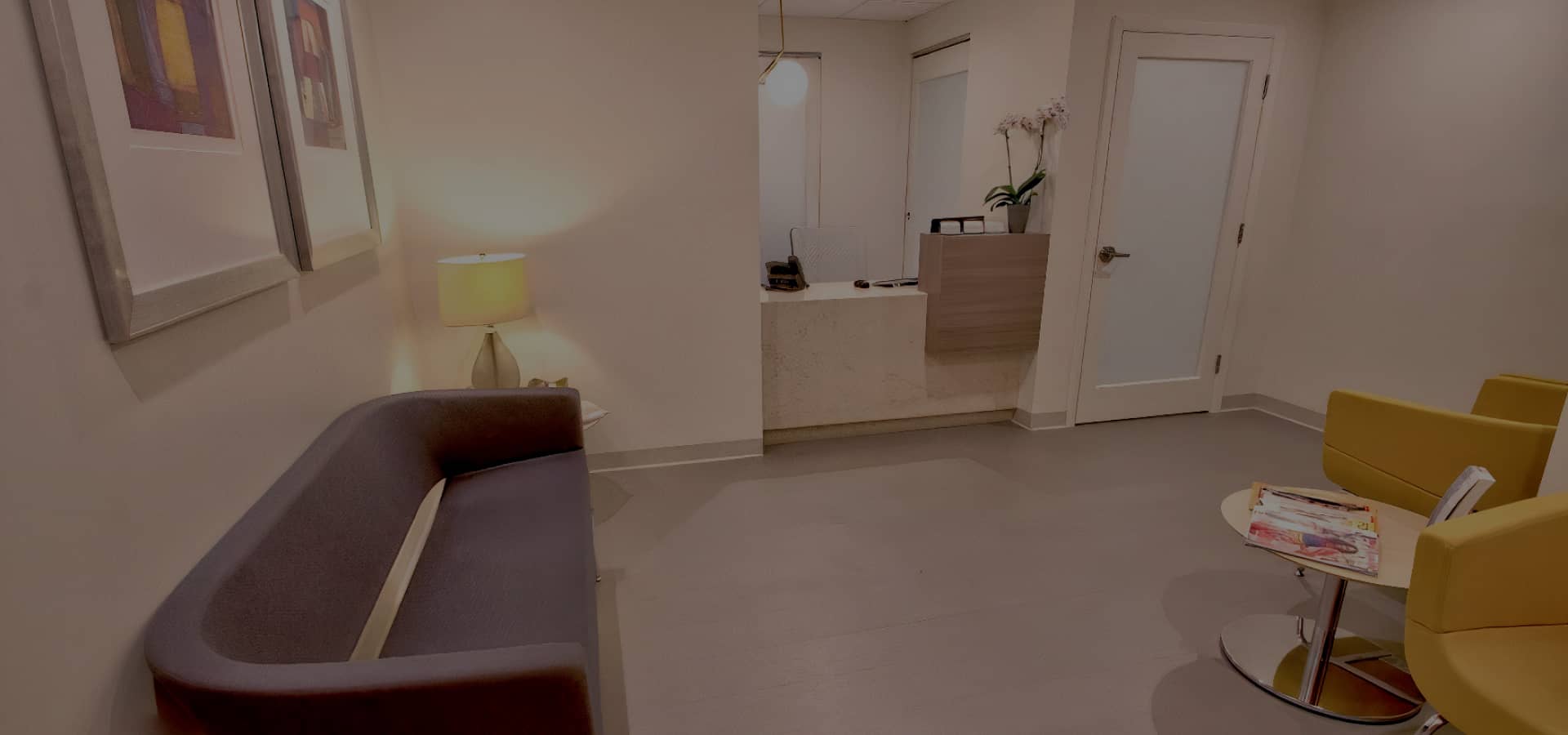Experiencing hair loss and considering a transplant? Welcome to your guide on the two most popular hair transplant methods: FUE and FUT. As you navigate this complex domain, understanding how these procedures vary – in terms of recovery time, scars, and session duration – is critical. Stay tuned as we take a closer look at each of these approaches, simplifying your decision-making process.
Identifying the Two Major Hair Transplant Techniques: FUE vs. FUT
Hair transplantations have revolutionized hair restoration options for those dealing with hair loss. Two primary types of hair transplant surgeries exist; Follicular Unit Extraction (FUE) and Follicular Unit Transplantation (FUT). FUE involves extracting individual hair follicles from a donor area and implanting them where hair is thinning, while FUT removes a strip of tissue with hair follicles from a donor area and dissects it into individual grafts, for this reason, it is often called the “strip method” or “strip surgery”.
The type of hair transplantation you choose will depend on your needs and the recommendation of your surgeon. Both techniques serve to harvest donor hair effectively, but they differ significantly in how they are performed, recovery processes, and aesthetic results. Understanding these two techniques can help patients choose the best hair restoration option for their specific circumstances.
Comparison Criteria: How Do FUE and FUT Differ?
The primary factors that distinguish FUE and FUT relate to how individual hair follicles are harvested. In FUE, each hair follicle is taken directly from the scalp, making it a time-consuming procedure. However, FUT harvests follicular units from a small strip of tissue, which is then divided into individual grafts. The key differences in methodology determine which usually makes a better candidate.
For instance, individuals with larger areas of baldness often opt for FUT. It allows for more hair follicles to be transplanted in a single session. Conversely, FUE is ideal for those who prefer shorter healing times or have smaller, targeted areas for transplantation.
| FUE | FUT | |
|---|---|---|
| Method | Individual grafts | Transplantation of a strip of hair |
| Ideal Candidate | Smaller balding areas, prefers shorter recovery time | Larger balding areas, okay with longer recovery |
Recovery Time for FUE vs FUT: Which Procedure Heals Faster?
Comparing the recovery time for both hair restoration procedures, FUE notably heals faster. With FUE, healing might take up to a week, while FUT could take up to a month for recovery. However, the success rate for both techniques during this healing phase is generally high.
Comparing Scarring: Visible Scarring Versus Minimal Scarring
When comparing FUT and FUE procedures, scarring is a significant consideration. FUT is known to potentially leave behind visible scars, resulting from the linear incisions made during the procedure. These scars can be significant in both size and visibility, depending upon the patient’s healing ability and skin type. Conversely, FUE, known for its minimal scarring, involves taking individual hair follicles from the donor site, leaving smaller, less noticeable scars.
Even though both procedures involve scarring to some degree, the size, visibility, and location of scars can vary greatly between FUE and FUT.
| FUE | FUT | |
|---|---|---|
| Type of Scars | Small circular scars | Linear scars |
| Visibility of Scars | Minimal scarring | Visible scarring |
| Placement of Scars | Spread out across donor area | Single, concentrated area |
Hair Density Following FUE and FUT Transplants
Hair density post-surgery hinges greatly on the type of hair restoration option picked. FUE generally ensures a denser head of hair due to the precision in extracting hair grafts. Hair loss is targeted specifically, allowing a skilled surgeon to evenly distribute new growth.
On the other hand, FUT, involving the removal and division of a tissue strip from the scalp’s rear, may limit post-surgery hair density. Dense hair grafts are grouped closely, restricting versatility for different hairstyles, particularly shorter hairstyles.
Important to note, that some patients may need multiple transplant sessions to attain the desired hair density. At the end of the day, your surgeon’s skill also plays a vital role in the eventual outcome. Discussing extensively with your doctor about your hair density expectations is recommended before deciding on an FUT or FUE procedure.
Session Durations in FUE and FUT Procedures: Which Takes Longer?
The session length widely varies between FUE and FUT procedures. For a team executing a FUE procedure, individual follicle extractions can extend the session, often requiring multiple sessions over several months. On the contrary, FUT, with its strip extraction method, can provide a significant number of grafts in a shorter time, often in a single session.
| Procedure | Duration | Sessions Needed |
|---|---|---|
| FUE | Longer | Multiple |
| FUT | Shorter | Often single |
Final Thoughts on Choosing the Right Hair Transplant Method
It’s crucial to assess your specific needs when choosing between Follicular Unit Extraction and Follicular Unit Transplant. Some prefer FUE to avoid scars, while others opt for FUT for its success rate. Look at your preferred hairstyles; shorter hairstyles might expose FUT scars.
Consider recovery time, skin health, and donor hair availability. Engage with a professional team for a productive hair transplant consultation, assessing the density and quality of your head of hair. Hair follicles and follicular grafts determine the success rate of the chosen hair restoration option.
Count on a month for visible improvements post-surgery. Remember, your journey doesn’t end with the transplant, as protecting the transferred tissue is key. Ultimately, the best decision is one that meets your goals and satisfies your expectations.
Don’t gamble with your hair and appearance, consult an experienced hair transplant surgeon. Dr. Anthony Bared’s distinguished record in the world of hair transplant techniques makes him the perfect professional to consult. Benefit from his expertise and personal guidance today – it’s a significant step that will yield comprehensive insight into the FUE and FUT procedures.

